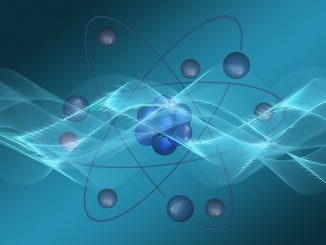
Resonators and wave-guiding systems are important components that make optical and electronic systems work as they are responsible for storing and releasing energy. There’s a limitation, though. It has to do with what’s known as the Q factor (Q stands for Quality) and a law formulated in 1914 by Engineer K. S. Johnson of the Western Electric Company (the precursor of Bell Telephone Laboratories).
The law states that the length of time a wave could be stored is inversely proportional to its bandwidth. Meaning, large amounts of data can’t be stored for a long period of time in resonant or wave-guiding systems because increasing storage time and quality of storage would mean decreasing bandwidth.
In other words, a resonator is only capable of either storing energy for long periods of time, or having a broad bandwidth. It can’t do both at the same time so one always has to choose. If storage time and quality are increased, bandwidth will be decreased. Conversely, if bandwidth is increased, the amount of data that can be stored is decreased.
It’s a century-old concept that has never been challenged. Until now, that is.
A team of researchers at EPFL (Ecole Polytechnique Fédérale de Lausanne) led by Kosmas Tsakmakidis, have developed a resonant and wave-guiding system that defies the concept of the Q factor, one that can store energy for a long period of time while maintaining a broad bandwidth. And they were able to do it through magnetic fields.
Specifically, they used a magneto-optic material to build a hybrid resonant/wave-guiding system that is able to stop the wave, store it for a prolonged period and accumulate huge amounts of energy when a magnetic field is applied; then release the stored energy as soon as the magnetic field is turned off. Aside from beating the conventional time-bandwidth limit by a factor of 1,000, the team was also able to show that in theory, asymmetric and non-reciprocal systems such as theirs will not be constrained by a maximum ceiling.
As described by Tsakmakidis: “It was a moment of revelation when we discovered that these new structures did not feature any time-bandwidth restriction at all. These systems are unlike what we have all been accustomed to for decades, and possibly hundreds of years.”
The breakthrough is expected to positively impact the fields of telecommunications, optical detection, broadband energy harvesting and storage, and broadband optical camouflaging (a.k.a. invisibility cloaking). In Tsakmakidis words, it’s a brand new tool whose applications are “limited only by one’s imagination”.
The study was recently published in the journal Science.
- Bulenox: Get 45% to 91% OFF ... Use Discount Code: UNO
- Risk Our Money Not Yours | Get 50% to 90% OFF ... Use Discount Code: MMBVBKSM
Disclaimer: This page contains affiliate links. If you choose to make a purchase after clicking a link, we may receive a commission at no additional cost to you. Thank you for your support!




Your abstract confuses two different reciprocities. The team proposed a *theoretic* way to overcome *Fourier* reciprocity by exploiting breaks of Lorentz reciprocity, which is already performed by Faraday rotation known for over 150 years – see https://www.nature.com/articles/ncomms11217 explaining this.